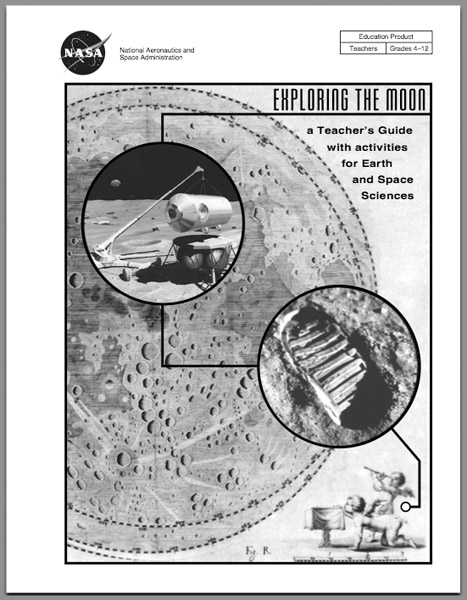
image from NASA
NASA’s new Orion spacecraft to return Americans to the Moon has been described as Apollo on steroids so perhaps it is appropriate that NASA has gone back to another lunar classic, this time only 10 years old, to introduce a new generation of learners to the Moon. Exploring the Moon is an excellent teacher’s guide to meaningful activites to teach kids (and educators) about lunar science. Because so many common activities about the Moon are restricted to understanding phases it is refreshing to have 146 pages of intelligent hands-on activities that address real questions such as: How big is the Moon? How does regolith form? How did the magma ocean cause differentiation of lunar materials? What explains differences in lava flow shapes? Why does the farside have fewer maria than the nearside? Just to ask these questions exposes students to knowledge of the way the Moon works and how scientists design experiments to collect data to solve mysteries. The reason this teachers’ guide is so good is that Jeff Taylor, an outgoing senior member of the lunar science community, coordinated its design and implementation. You can download the PDF of the document or have your local Office Max print a copy for you. Its aimed at 4th to 12 graders, so all of us can learn somethings from it.
Related Links:
Jeff’s website
Yesterday's LPOD: Half a Circle
Tomorrow's LPOD: Clicking to Classify
COMMENTS?
Register, Log in, and join in the comments.



